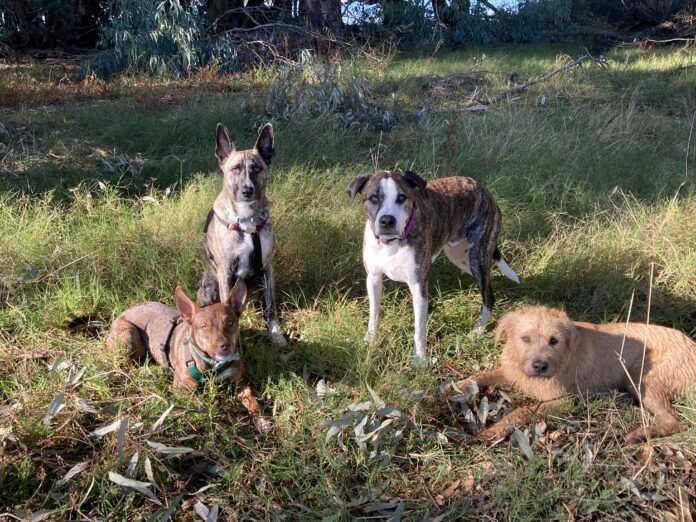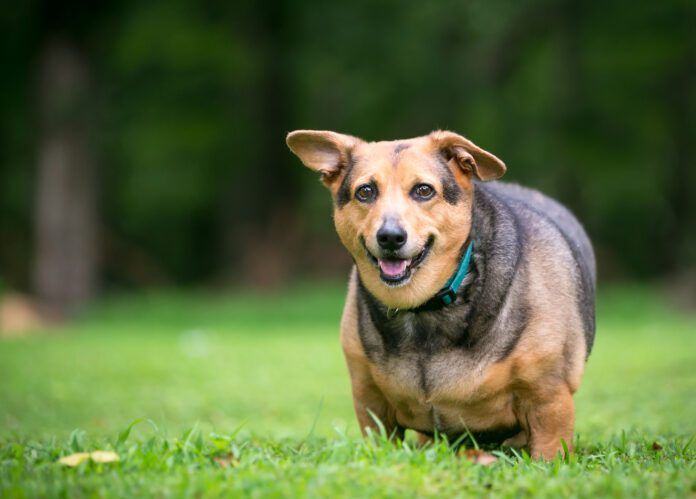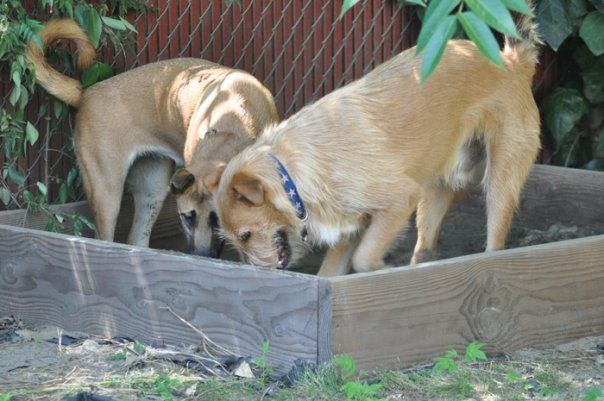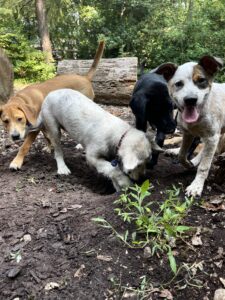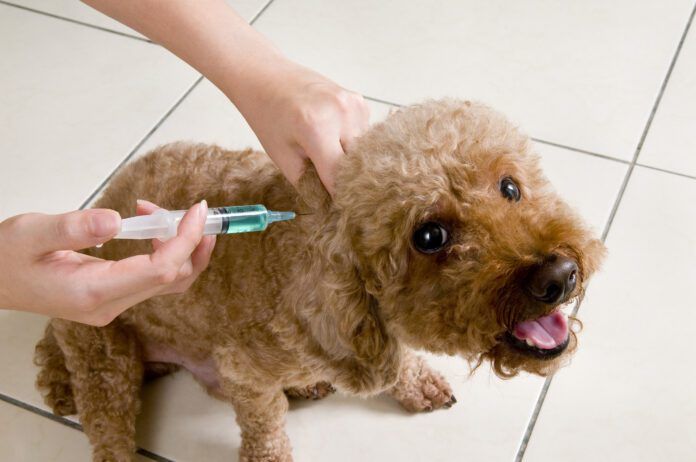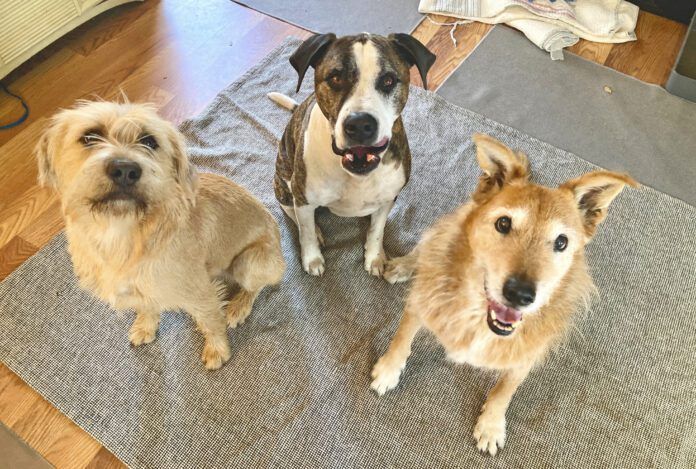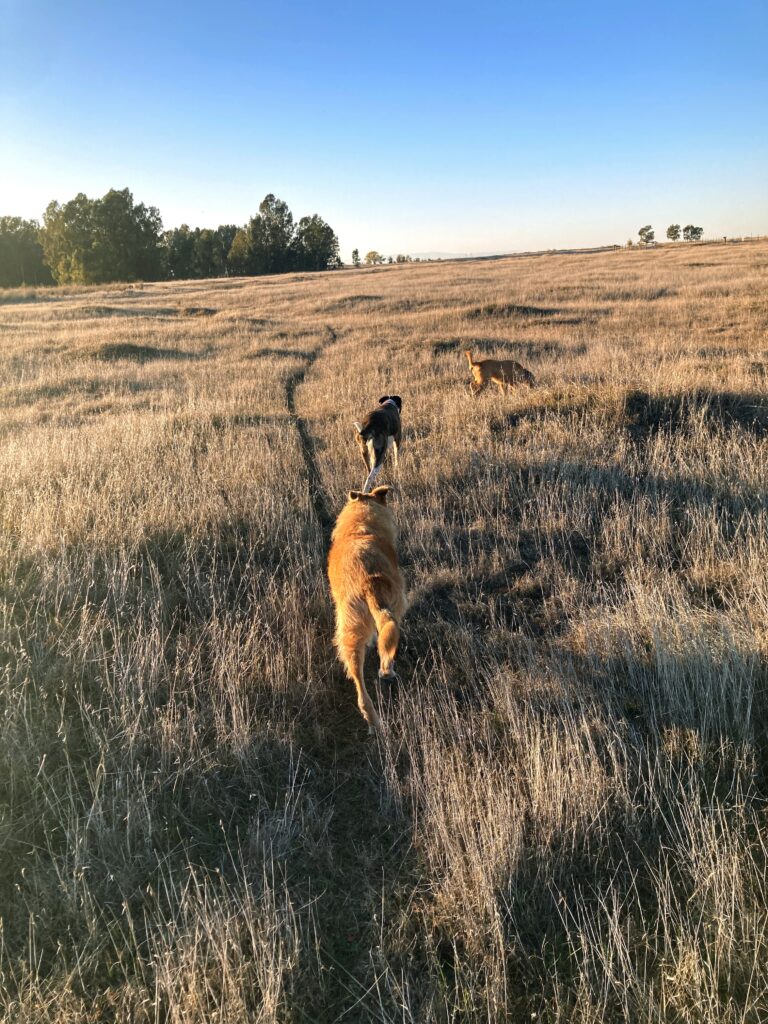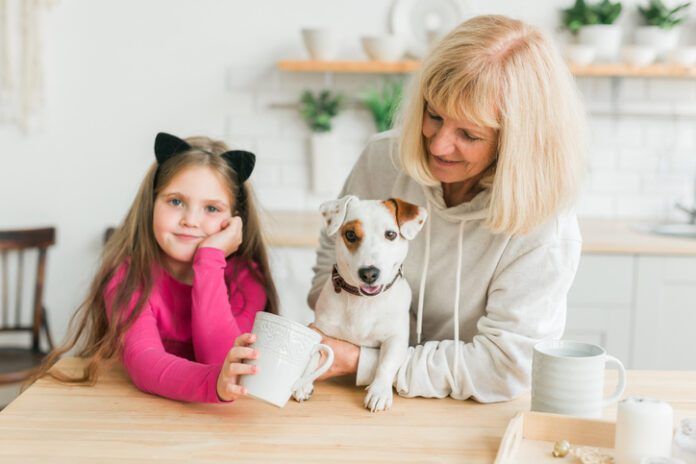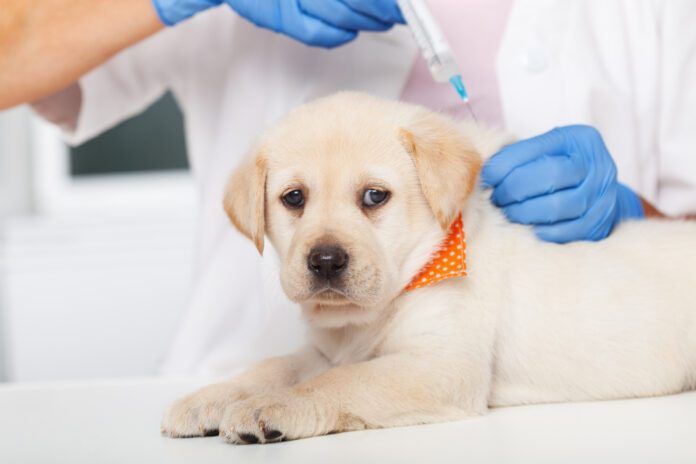I walk with my dogs in a number of locations in my local “wildlife area,” which consists of thousands of acres of land surrounding the Feather River, which feeds and then comes out of the gigantic Oroville Dam, here in Oroville, California. Dogs are allowed off-leash, except in the spring when birds are nesting. This is absolutely the best time of year to go walking there, because it’s not hot, the snakes are mostly hibernating or very slow, the stickery dried grasses are giving way to soft green grass, and, of course, we can still walk off leash.
Depending on which part of the wildlife area I go to, the dogs may see deer; the woodsy parts of the wildlife area are loaded with deer (and hunting is allowed there within certain seasons,). And no matter what part of the area I visit, they will see rabbits. We always see rabbits. This gives us a good opportunity to practice our recalls and be richly, handsomely, wildly rewarded for not chasing the deer and/or rabbits.
Each of my dogs has had a phase where not chasing the wildlife was a big challenge. Otto got through his phase the quickest. Of course, he’s 15 years old now and maybe my memory is fading, but I remember him deciding against responding to my recall cue in favor of chasing a wild animal maybe once or twice. It must have been more but it’s been a long, long time.
Woody was far more tempted as a youth, and we had more than a handful of failures to resist the urge to chase. Today, at 7 years old, he will reliably recall to me if he spots a deer or jackrabbit at a distance, but he might take off after a rabbit – and fail to immediately “leave it” in response to my shouts – if one pops up from right under his paws in the tall grass. This exact scenario happened recently, and though he did launch a pursuit, he also stopped in response when I yelled “WOODY OFF!!” He got the entire contents of my treat pouch, and hours of praise and massage, after that response. He’s a good dog!
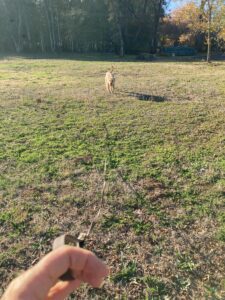
But nearly 1-year-old Boone is going to be my Waterloo. In the past two months, ever since the suicidal squirrel incident, he’s been on fire to find and chase animals. And damned if he has not detected and gone flying off into the woods after deer TWICE in recent weeks. He’s come back within a couple minutes each time, but harassing wildlife is an absolutely unacceptable behavior, a danger to himself, the deer (of course), and others. So I recently bought a 33-foot long line and vowed that Boone is not going to be allowed off leash on our trails for at least the next year or so, and maybe never! Using a long line allows the dog to still romp and sniff and (to a certain extent) run and play with the other dogs while on a walk, but prevents him from taking off in pursuit of animals or birds. And it can be a huge help in teaching him a solid recall in the face of these temptations.
Doubling Down: It’s Critical to Prevent the Dog From Practicing Unwanted Behavior
As I explained in the squirrel blog post, it almost doesn’t matter how much or how fabulously you reinforce the dog for coming to you when he’s called, if the reinforcement he receives for not coming to you when called is even greater. And what is greater than the thrill of chasing after wild animals? For some dogs, including Boone, apparently nothing rates as high on the “valuable reinforcement” scale. And he’s not likely to forget the thrill anytime soon, because it’s been randomly reinforced by these incidents of my inattention and lack of commitment to keeping him on leash. But that’s over!
Well, almost over. Just the other day, I took Boone and Woody for a walk in the wildlife area with my friend Jessie, who owns two dogs, both of which happen to be my former foster puppies. Nova is four years old now, and Nyx is about 18 months old. Jessie had Nyx on leash, because she wasn’t responding reliably each time we called our dogs back to us, and Boone was on his new long line. Managing a long line when you are walking with another person and several dogs is a challenge, and at one point I was looking down and trying to sort out a minor tangle as we walked, when off-leash Nova apparently flushed a jackrabbit and took off like a shot. Because I wasn’t looking, and wasn’t holding the end of the long line firmly, Boone, too, took off like a shot and the line flew out of my hands like a whip.
Nova, who is usually a very good dog, did not respond to calls to “leave it” or come back; she and Boone, who was trailing 33 feet of leash, flew out of sight down the dirt road. Woody, my very good dog – the best dog of the day – didn’t follow. Nyx would have been happy to join the hunt, but thank goodness she was on leash.
I once heard a trainer instruct a class on the proper use of a rolled-up newspaper for training, and I will customize that advice here for myself: “Roll it up and then hit yourself over the head while repeating, ‘I will pay attention and hold firmly to the end of the long line from now on!’”
Boone, I’m sorry for letting you down by letting you off-leash more times than you could handle, buddy. Now I’ll work on finding ways to make being on leash more fun for you, with tug toys and perhaps a toy on a “flirt pole” to chase as we walk. But no more hunting for you, my friend.


